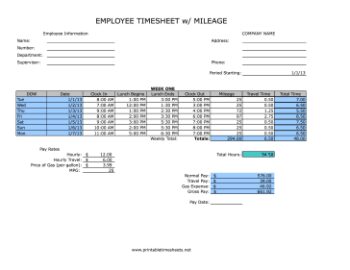
Medicare is a federal health insurance program consisting of three parts (A, B, and D). Most people don’t pay for Medicare Part A (hospital insurance) because its funded by taxpayer contributions to the Social Security Administration. what is a bank statement Employees pay 1.45% of their earnings, employers pay another 1.45%, and self-employed individuals pay the full 2.9% on their own. Income up to a threshold amount is subject to the “regular” Medicare tax.
As there is no ceiling on the 1.45 percent portion of the Medicare tax, you must continue to withhold and pay the Medicare tax regardless of how much you pay an employee. Though Medicare offers a wide range of cost and coverage options, funding the Affordable Care Act provides further aid to those in need. Your additional Medicare tax contributions help individuals or families below the federal poverty level. If you’re head of a household and responsible for filing the taxes, you’ll be responsible for paying the additional Medicare tax if your income is above $200,000. The additional Medicare tax applies to your wages, compensation, Railroad Retirement Tax Act (RRTA) compensation or self-employment income. Gratuity tips you may receive at work should also be accounted for.
What is the Income Threshold for Additional Medicare Tax?
Both employed and self-employed individuals pay some of their income into Medicare through taxes. Since 2013, the additional Medicare tax is applied to income above designated levels. An employee will pay 1.45% standard Medicare tax, plus the 0.9% additional Medicare tax, for a total of 2.35% of their income.
In 2022, the Social Security tax rate is 6.2% for employers and employees, unchanged from 2021. The Social Security wage base is $147,000 for employers and employees, increasing from $142,800 in 2021. Self-employed people must pay 12.4% on the first $147,000. Keep in mind that FICA taxes are based on your total compensation for the year. That means you need to consider your total earnings from all your jobs combined when you calculate your self-employed FICA taxes, even if your self-employment doesn’t generate that much income on its own.
Married Filing Separate
The self-employment tax covers your entire 15.3% of FICA taxes, paying your share of Social Security and Medicare taxes. By law, in accordance with FICA, employers are required to withhold Medicare tax and Social Security tax from every paycheck and submit them to the government or face significant penalties. All employees, employers and self-employed workers in the United States, regardless of citizenship or residency status, must pay Medicare taxes to fund the Medicare Hospital Insurance program. Under the Affordable Care Act, taxpayers who earn above a set income level (depending on filing status) pay 0.9% more into Medicare on top of the regular contribution. Wages paid by an agent with an approved Form 2678 on behalf of an employer are not combined with wages paid to the same employee by any of the above other parties in determining whether to withhold Additional Medicare Tax. Liability to withhold Additional Medicare Tax with respect to wages disbursed by the common paymaster is computed as if there was a single employer, just as it is for application of the social security wage base.
In some cases, there may be a “mismatch” between the amounts you are obligated to withhold and the amount of your employee’s surtax liability. Unlike the 6.2 percent Social Security tax and the 1.45 percent Medicare tax, the 0.9 percent surcharge is imposed only on the employee. You withhold the surtax from employee wages, but there is never a matching payment required by the employer. For example, if you’re filing single and your income is $250,000, only $50,000 will be subject to the 0.9% tax. This is because the threshold limit for filing single is $200,000.
Employer Responsibilities
An employer is responsible for withholding the Additional Medicare Tax from wages or railroad retirement (RRTA) compensation it pays to an employee in excess of $200,000 in a calendar year, without regard to filing status. An employer must begin withholding Additional Medicare Tax in the pay period in which the wages or railroad retirement (RRTA) compensation paid to an employee for the year exceeds $200,000. The employer then continues to withhold it each pay period until the end of the calendar year. Barney earned $75,000 in Medicare wages, and Betty earned $200,000 in Medicare wages, so their combined total wages are $275,000. Barney and Betty will owe the Additional Medicare Tax on the amount by which their combined wages exceed $250,000, the threshold amount for married couples filing jointly.
3 Trends Impacting How Patients Pay For Healthcare – MedCity News
3 Trends Impacting How Patients Pay For Healthcare.
Posted: Wed, 02 Aug 2023 22:19:26 GMT [source]
See section 7 of Publication 15-A for more information on common paymasters. On December 1, 2013, M’s employer paid her a bonus of $50,000. M’s employer is required to withhold Additional Medicare Tax on $30,000 of the $50,000 bonus and may not withhold Additional Medicare Tax on the other $20,000. M’s employer also must withhold Additional Medicare Tax on any other wages paid in December 2013.
Railroad Retirement Tax Act Compensation
Through employment payroll tax withholdings, Medicare tax funds accumulate in the system for later use. It also pays for administering the Medicare program and covering the costs of fighting Medicare fraud and abuse. You can do this by making estimated tax payments or by requesting that your employer take extra withholding from your pay. A and B live in a community property state and are married filing separate. A has $200,000 in wages and B has $100,000 in self employment income. A is liable for Additional Medicare Tax on $75,000, the amount by which A’s wages exceed the $125,000 threshold for married filing separate.
- If you paid too much based on your filing status, your employer cannot stop withholding your Additional Medicare Tax.
- On this line, employers report any individual’s wages paid during the quarter that is in excess of the $200,000 withholding threshold for the year as well as the withholding liability for Additional Medicare Tax on those wages.
- Generally, you will find that not all wages or incomes are subject to Medicare taxes.
- There are some changes to taxes due to coronavirus (COVID-19), and a person can check for the most recent changes on the IRS website.
- You should consider your estimated total tax liability in light of your wages, other compensation, and self-employment income, and the applicable threshold for your filing status when determining whether estimated tax payments are necessary.
The obligation to withhold applies only to amounts in excess of $200,000. However, once you are obligated to begin withholding the Medicare surtax, you continue to withhold it each pay period until the end of the calendar year. To calculate your additional Medicare tax liability, you’ll need Form 8959 when filing for your tax return.
Social Security and Medicare Tax Withholding Rates and Limits
This influences which products we write about and where and how the product appears on a page. Here is a list of our partners and here’s how we make money. RetireGuide doesn’t believe in selling customer information. However, as required by the new California Consumer Privacy Act (CCPA), you may record your preference to view or remove your personal information by completing the form below.
- The Medicare tax funds are used to pay for Medicare Part A, which provides hospital insurance for the elderly and people with disabilities.
- Albert’s Additional Medicare Tax is therefore $225, or 0.9% of $25,000.
- The tax funds are used for Medicare Part A, which covers hospital insurance for senior citizens and those living with disabilities.
- In making this determination, you do not consider wages paid by other employers or earnings of the individual’s spouse.
- He then earns $51,164 in freelance income (1099 income) after expenses given he works additional jobs on the side to expedite his path to financial freedom.
On December 1, you are required to withhold Additional Medicare Tax on $20,000 of the $50,000 bonus. You may not withhold Additional Medicare Tax on the other $30,000. You must also withhold the additional 0.9 percent Medicare tax on any other wages paid to Trevor in December 2022. There is no regular withholding for self-employment tax, so if you expect that your income might be above the levels above, you may need to increase your estimated tax payments to account for the additional Medicare tax.
File
So, what if you have a married employee who files jointly or separately? Disregard their filing status when it comes to payroll tax withholding—the IRS requires that employers withhold the tax from wages over $200,000. There’s one special rule for railroad income, according to the IRS.

Employers are responsible for withholding the 0.9% Additional Medicare Tax on an individual’s wages paid in excess of $200,000 in a calendar year, without regard to filing status. An employer is required to begin withholding Additional Medicare Tax in the pay period in which it pays wages in excess of $200,000 to an employee and continue to withhold it each pay period until the end of the calendar year. For more information, see the Instructions for Form 8959 and Questions and Answers for the Additional Medicare Tax. To the extent the employer does not withhold the 0.9 percent Medicare surtax, the employee must pay the tax. Employees who anticipate being under-withheld for the Medicare surtax can make estimated payments or they can request additional income tax withholding on Form W-4. The employee can then apply the additional income tax withheld against Medicare surtax liability on his or her Form 1040 (U.S. Individual Income Tax Return) or Form 1040-SR (U.S. Tax Return for Seniors).
Also, the “ignore the spouse’s earnings” rule applies even if both spouses work for the same company. However, in community property states, half of any income tax withholding on wages will be credited to the other RDP. By contrast, each RDP takes full credit for the estimated tax payments that he or she made. There is no limit on the amount of earnings subject to Medicare (hospital insurance) tax. The Medicare tax rate applies to all taxable wages and remains at 1.45 percent with the exception of an “additional Medicare tax” assessed against all taxable wages paid in excess of the applicable threshold (see Note). The FICA tax rate, which is the combined Social Security rate of 6.2 percent and the Medicare rate of 1.45 percent, remains 7.65 percent for 2022 (or 8.55 percent for taxable wages paid in excess of the applicable threshold).